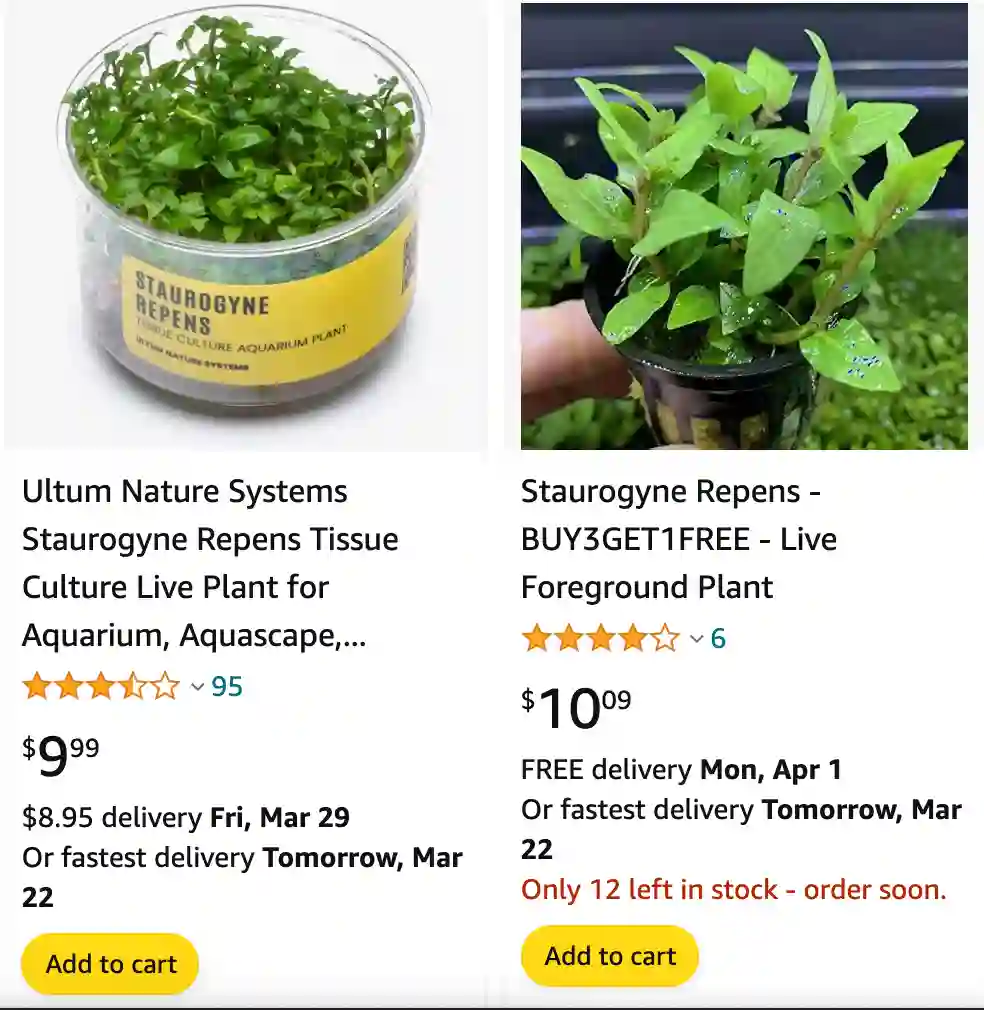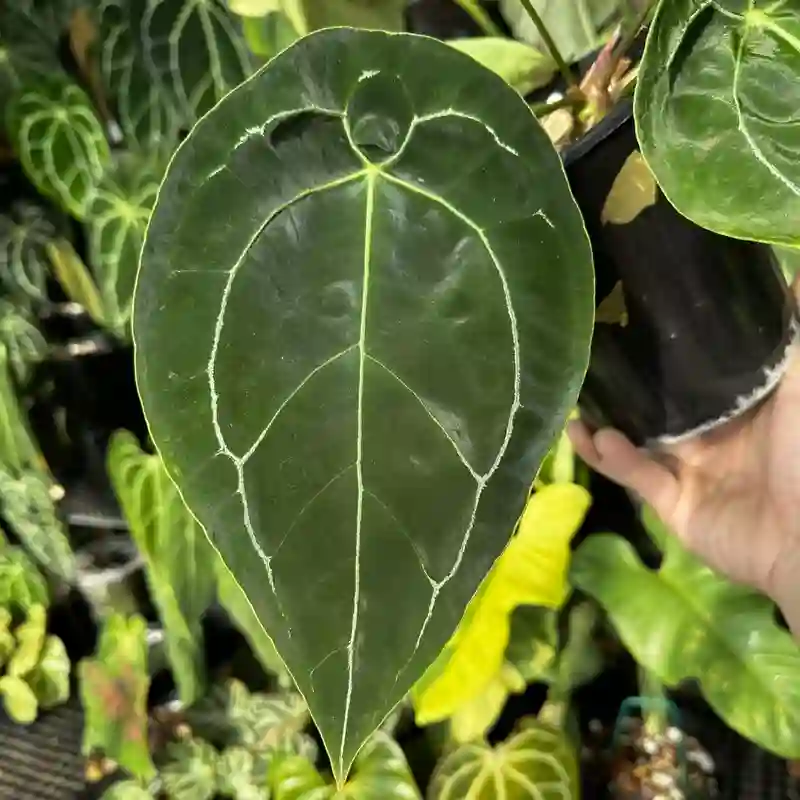
Does Staurogyne repens need CO2?
Staurogyne repens doesn’t strictly need CO2, but I’ve noticed it grows much healthier and more robust when I use CO2 injection in my tank. Without CO2, it tends to grow more slowly and its leaves aren’t as vibrant, but it still manages to survive. Adding CO2 really boosts its growth and overall appearance, making it lush and vibrant, which is what I love about it.
How to plant Staurogyne repens?
When I plant Staurogyne repens, I make sure to separate it into small clumps and plant them a few centimeters apart. I gently push the roots into the substrate, ensuring they are well-anchored. This way, the plant has enough space to spread out and grow more compactly, forming a nice carpet over time.
Can Staurogyne repens be floated on top?
I’ve never tried floating Staurogyne repens on top of the tank, but from what I understand, it isn’t ideal. This plant is more suited to being anchored in the substrate because it needs the stability to establish its roots properly. Floating might cause it to struggle to get the nutrients it needs and it wouldn’t look as good as when it’s planted.
Can Staurogyne repens regrow from roots?
Yes, Staurogyne repens can regrow from its roots. I’ve had instances where the top part of the plant melted away, but new shoots started appearing from the remaining roots. It’s quite resilient that way, which is great because it can bounce back even if the main plant gets damaged or stressed.
Does Staurogyne repens need root tabs?
I find that using root tabs is very beneficial for Staurogyne repens, especially if you don’t have a nutrient-rich substrate. These tabs provide essential nutrients directly to the roots, promoting healthier and faster growth. I always see a noticeable improvement in the plant’s vigor and color when I use root tabs.
Does Staurogyne repens need substrates?
Staurogyne repens does best with a good substrate, preferably one that is nutrient-rich. While it can survive in inert substrates with added fertilizers, I’ve found that it really thrives in a substrate that provides consistent nutrients to its roots. This helps the plant establish itself more quickly and grow more robustly.
How fast do Staurogyne repens grow?
The growth rate of Staurogyne repens can vary, but in my experience, it grows moderately fast, especially when conditions are ideal. With good lighting, CO2, and nutrients, it can grow quite quickly, filling out the space and creating a lush carpet within a couple of months.
How long for Staurogyne repens to grow?
From planting to having a fully grown carpet, Staurogyne repens can take several weeks to a few months, depending on the conditions. In my tank, I usually see significant growth within a month, and it continues to spread and thicken over time, eventually forming a dense mat.
How to propagate Staurogyne repens?
To propagate Staurogyne repens, I simply trim the top parts of the plant and replant them into the substrate. These cuttings develop roots and start growing into new plants. I’ve had a lot of success with this method, and it’s an easy way to expand my carpet or share the plant with other hobbyists.
Is Staurogyne repens safe for turtles?
I’ve kept Staurogyne repens with my turtles, and it’s safe for them. The turtles don’t seem particularly interested in eating it, and the plant holds up well despite their occasional digging. It’s a hardy plant that can withstand some rough treatment, which is perfect for a turtle tank.
Is Staurogyne repens water column?
Staurogyne repens can absorb nutrients from the water column, but it primarily benefits from nutrients absorbed through its roots. I dose liquid fertilizers in my tank to make sure it gets what it needs from the water column as well, but I focus more on root feeding with tabs.
What to do when Staurogyne repens melt?
When my Staurogyne repens starts to melt, I usually check my water parameters and lighting to ensure everything is in order. Then, I trim off the melting parts to prevent decay from spreading. Often, improving the conditions and removing the damaged parts helps the plant recover and regrow healthy new shoots.
If i die, water my plants!



